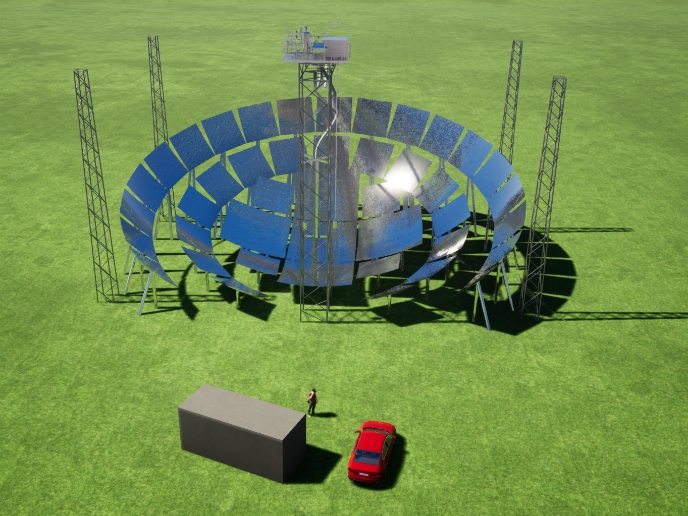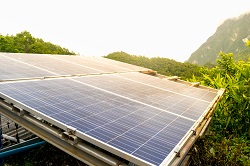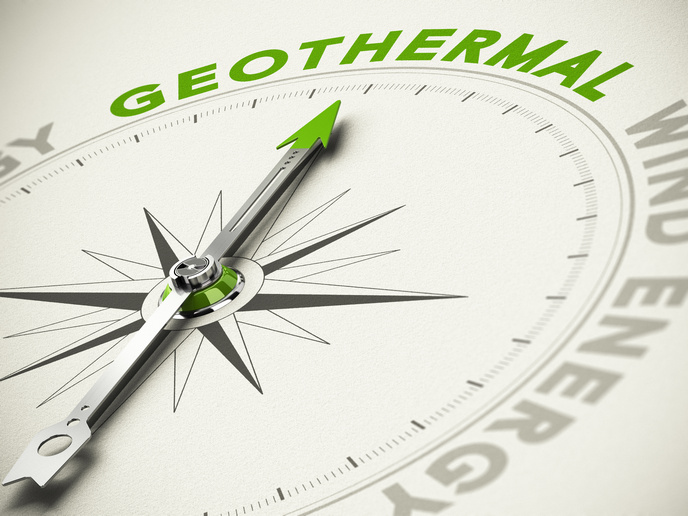A mosaic of shiny hollow spheres works its magic on sunlight
CSP relies on mirrors or reflectors to concentrate the sun’s energy and focus it on some type of solar receiver. To date, all have mobile concentrators that track the sun and reflect the concentrated light onto a stationary receiver. The solar ‘field’ or concentrators and their sophisticated tracking systems do not come cheap. The EU-funded MOSAIC project exploited fixed spherical concentrators, or solar bowls, that eliminate the need for tracking thanks to their unique optics. MOSAIC implemented lots of them in an innovative modular design for significant cost savings with numerous technical and practical advantages.
The shape of things to come
There are several different types of CSP plant designs that vary based on the shape of the reflectors and the shape of the receivers, and subsequently whether light is focused onto a line or a point. A parabolic trough collector concentrates the sun’s energy on a receiver or absorber tube traversing the focal line of the trough. A solar power tower is now one of the fastest growing solar technologies, using hundreds or thousands of small reflectors called heliostats to concentrate the sun’s rays onto a central receiver placed atop a fixed tower. Linear Fresnel systems are a nascent technology, like the parabolic trough but using many small mirrors rather than one large one. Spherical concentrators reflect the sun’s rays along a line pointing to the sun through the centre of the sphere at any time of day without moving. Despite their well-established cost reduction potential, they have not received much attention. Project coordinator Cristobal Villasante of Tekniker explains: “MOSAIC uses small semi-Fresnel spherical concentrators in an innovative modular configuration. Each module consists of a fixed spherical mirror concentrator and a moving receiver driven by a low-cost cable tracking system. This radical change in CSP plant operation is similar in concept to the Arecibo Observatory’s huge radio telescope, the site of the most powerful broadcast ever deliberately beamed into space in the search for extra-terrestrial intelligence. Energy from the sun is collected, concentrated and transferred to the heat transfer fluid by each module. The modules deliver their thermal load to the storage system that then supplies a single high-capacity (> 1 GW) power block where electricity is generated centrally.”
The sky is the limit
The shorter distances between solar concentrator and receiver relative to typical solar tower technologies maximise energy collection efficiency, minimise atmospheric attenuation and decrease the required precision of tracking technologies. High concentration ratios and high working temperatures result in high cycle efficiencies. Fewer moving parts decrease the solar field costs. All these benefits decrease the capital cost while ensuring efficiency and reliability, significantly lowering the final cost of electricity production. Thanks to modularity, the total power of the plant is theoretically unlimited and could range from kilowatts to more than 1 GW. MOSAIC is now entering the commissioning phase. According to Fabrizio Perrotta, the project’s dissemination leader, “we are targeting plant operators and industrial stakeholders in more than 25 countries. Initially intended for electricity production, MOSAIC can also be advantageously used for emission-free industrial heat production. We are currently identifying applications.” So, expect soon to see shiny mosaics of tiny spherical concentrators decorating landscapes and contributing to cleaner energy for an increasingly green world!
Keywords
MOSAIC, solar, energy, CSP, spherical concentrator, solar bowl, parabolic trough, Fresnel, concentrated solar power, solar power tower







